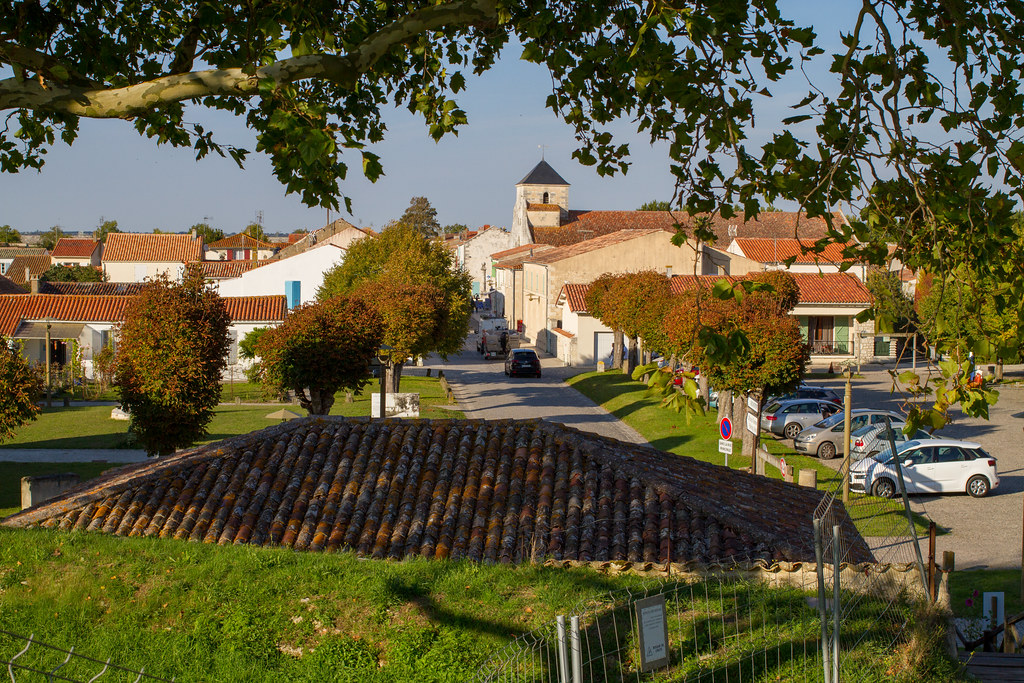
Date and Time of Visit: September 23, 2017, approximately 6:00 p.m.
It’s been a while since I’ve posted a series on visiting the most beautiful villages in France. In my web profile, I proudly claim that I have conquered all the most beautiful villages in France, but in fact, it was a “fake” profile.
Another new village will be added in June 2017.
Because in June 2017, the village of Brouage became the 156th village to be included in the new list of France’s most beautiful villages.
This is the fifth village in Charente-Maritime province. By the way, the other 4 are as follows. Of course, I have already visited them.
These four villages share a common atmosphere because they are located near the sea. When you are close to the sea, you can enjoy the openness and the beautiful design of the buildings that match the bright colors of the sea. However, as always, the Charente-Maritime department, including Brouage, is located in a place where it is difficult to visit efficiently. It is true that the village on the Île de Ré is easily accessible from the big town of La Rochelle, but I don’t think many Japanese go to the town of La Rochelle.
It was more crowded than I expected.
Well, we headed to this village from the city of Bordeaux. I’ve been to Bordeaux quite a few times before I realized it. But this time we didn’t stay overnight, we just dropped in for a while. I think it took longer time to get to this village from Bordeaux than I expected. By the time we arrived at the village, it was past 6pm. Even so, the sun was still high as it is located in the west of France, so it was no problem at all for sightseeing. And the weather was fine!
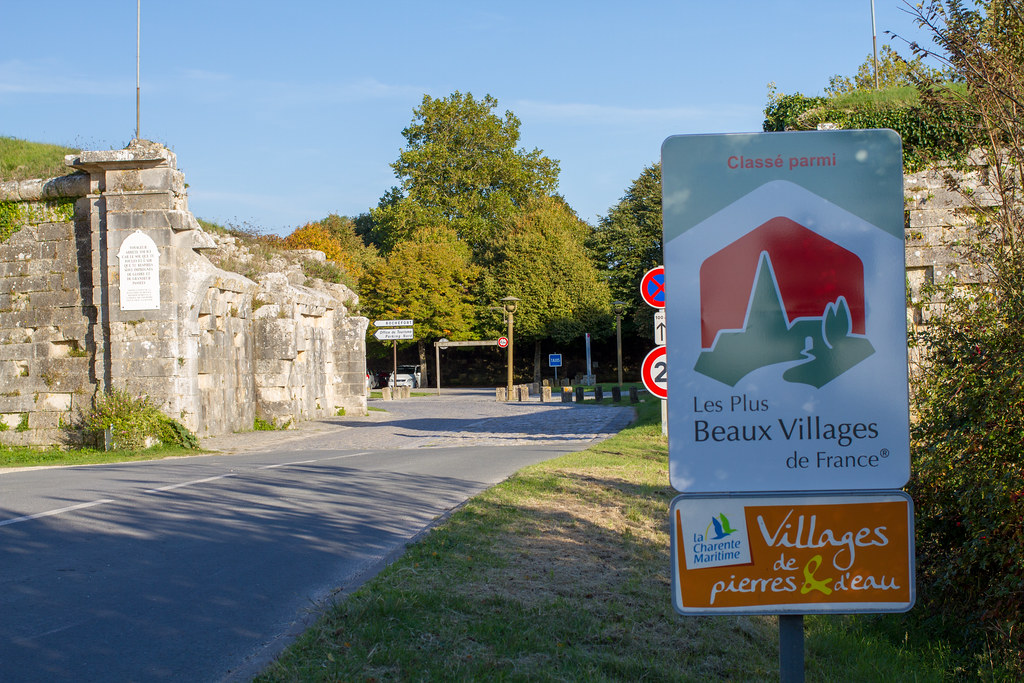
I was surprised that there were more cars and people than I expected, even though it is located in a very difficult place to get to. By the way, it was Sunday that day, so that might have been the reason. It was a very open village, and although it was already late September, it was warm enough and the weather was still very much like a vacation. Also, it has recently become known as one of the most beautiful villages in France, so that may have had an influence. (It may be a long way off, but on this trip, I visited the most beautiful village in France for the first time in seven years, and I was surprised to see that it was much more crowded than it was seven years ago. I plan to do a new post on this area 🙂
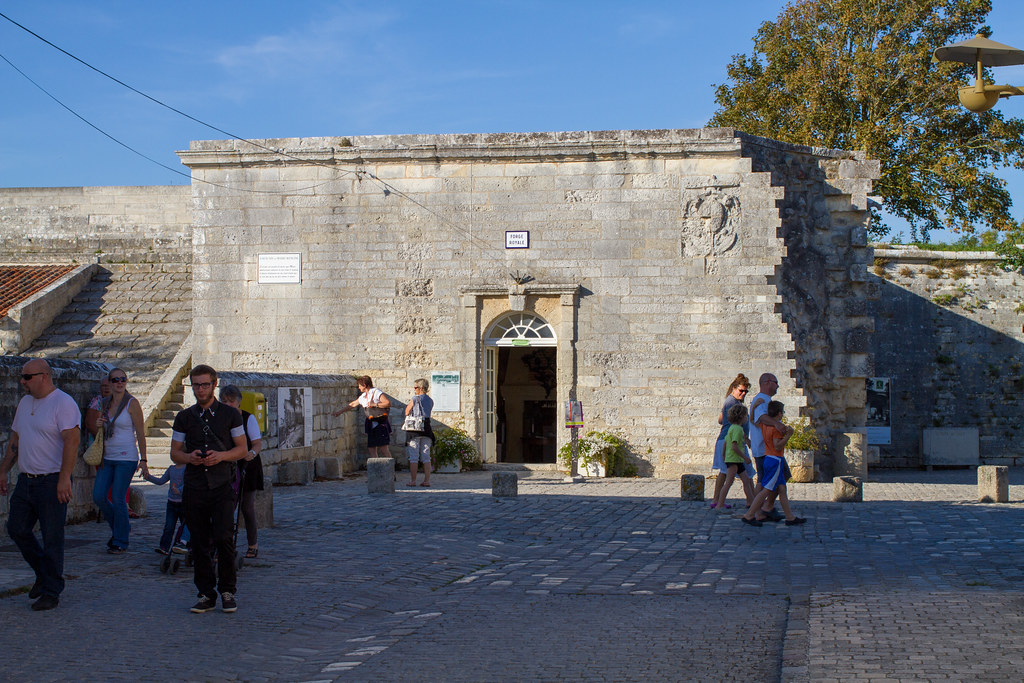
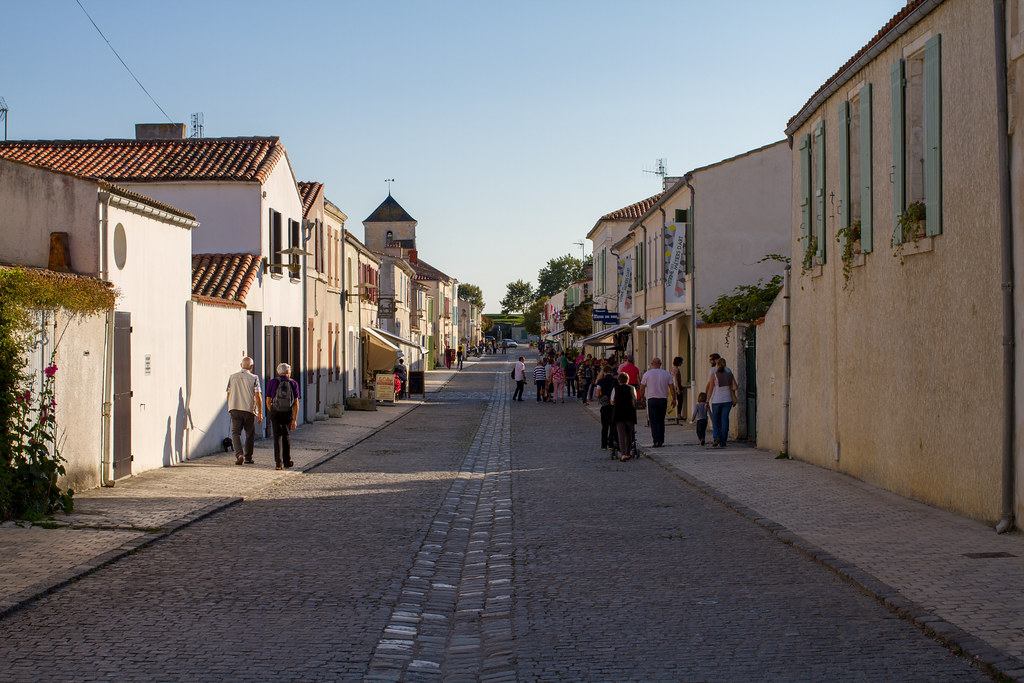
I thought I would have trouble parking because it was more crowded than I expected, but there was a large parking lot for visitors just inside the village, so I was able to park without any problems. Of course, the parking lot itself was empty because it was already the time of evening, but if you come in the daytime, you may have had trouble parking.
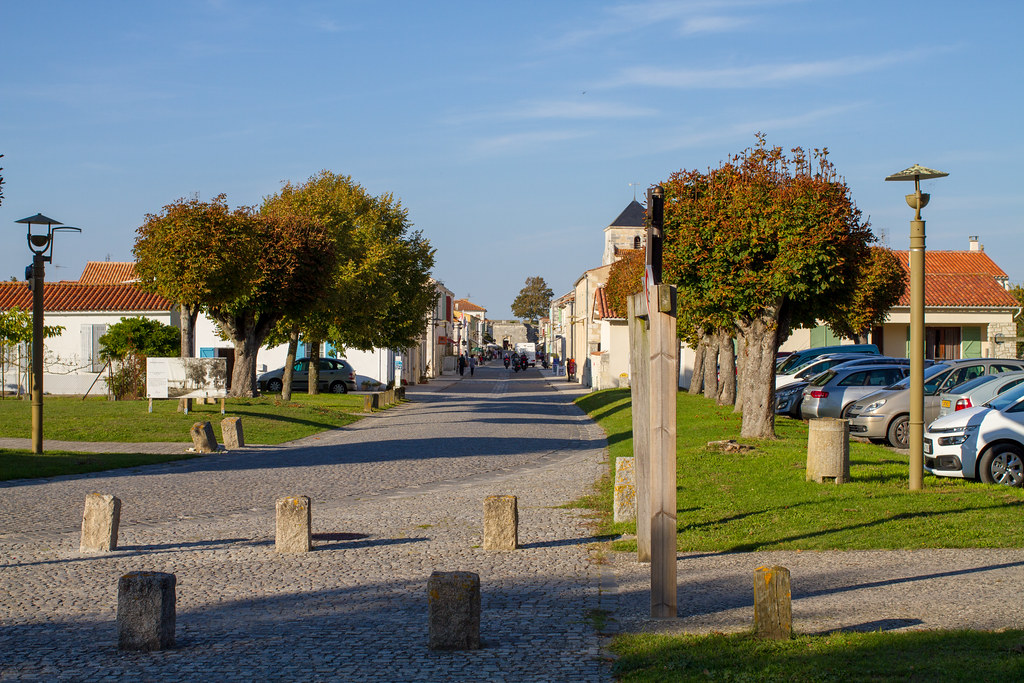
By the way, this village has a very welcoming and comfortable atmosphere for tourists. There is a signboard like this at the entrance of the village.
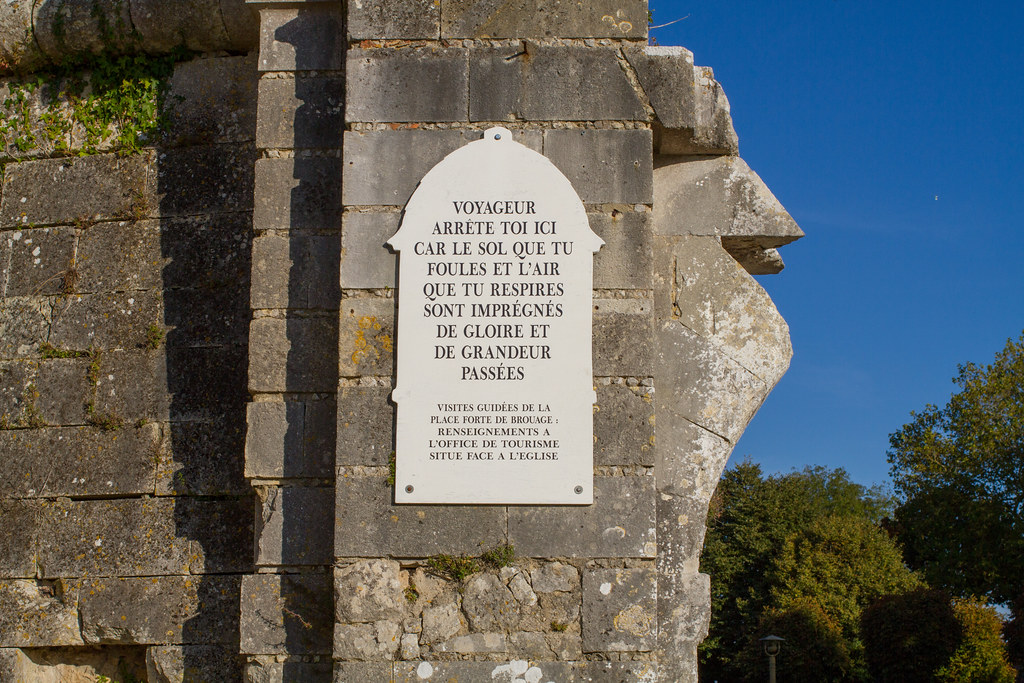
I can’t translate it well because I don’t have any language skills.
It says something like.
History of this village
Here is a brief history of this Brouage, based on the article above and the information I got from the local church. (Click here for resources on the history of the church)
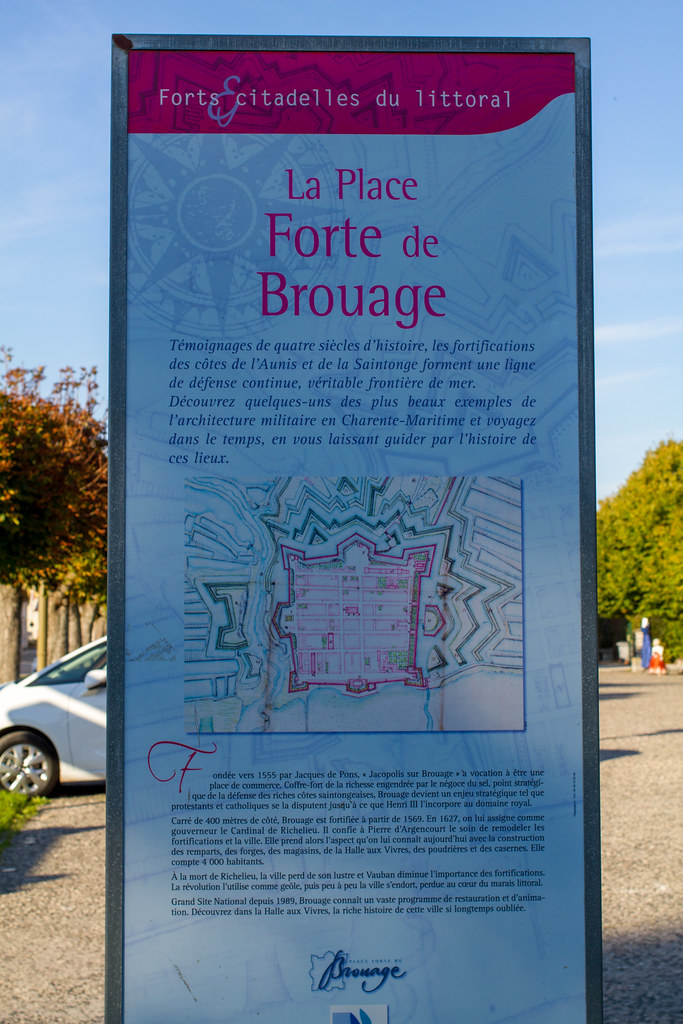
Brouage is a village in the Charente-Maritime department on the Atlantic side of western France. It is now a low marshy area, but it used to be an area where small islands existed one after another. In the 16th century, a full-fledged fortress was built, which is the original form of the village we can see today.
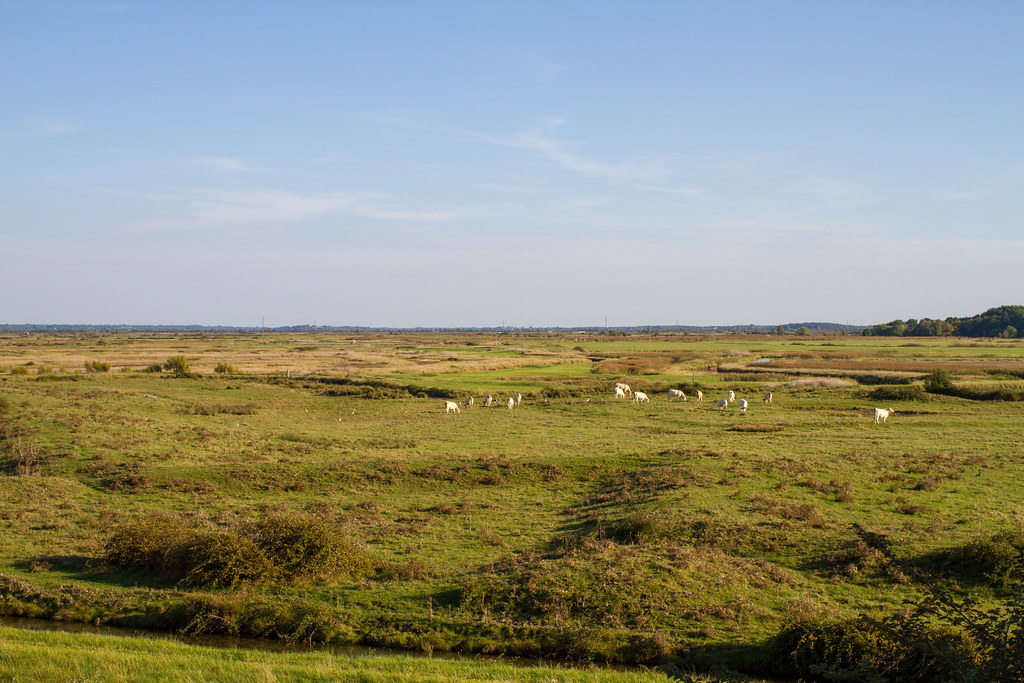

So, the best thing about this village is that you can see the remains of this fortress. You can also walk on the wall that surrounds the town. It is higher than it looks, and there is no railing on the wall, so you have to be careful.

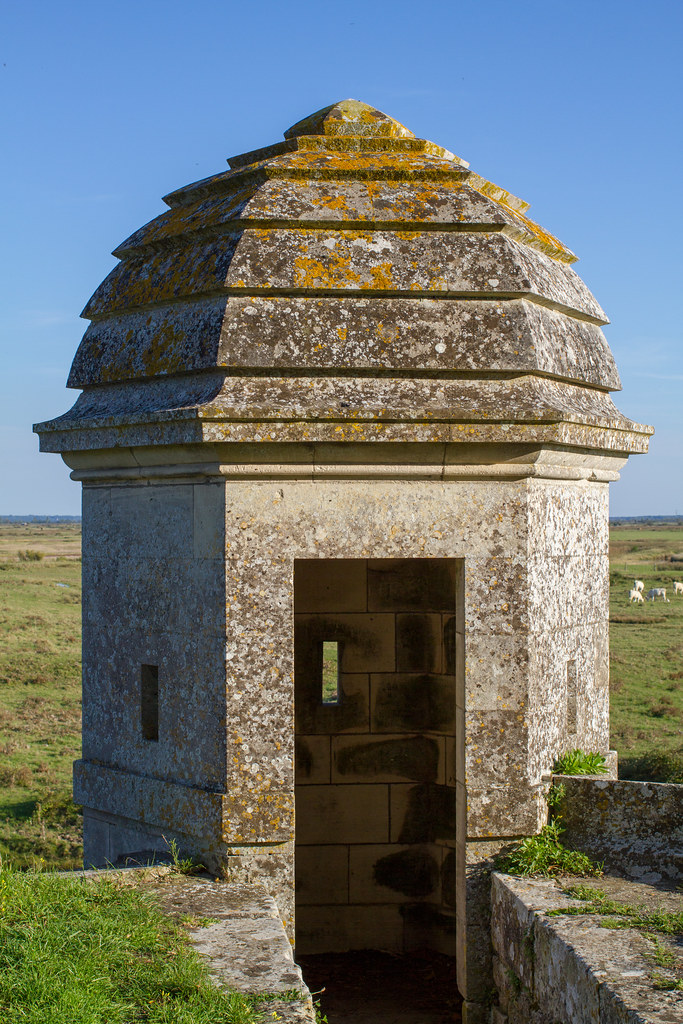
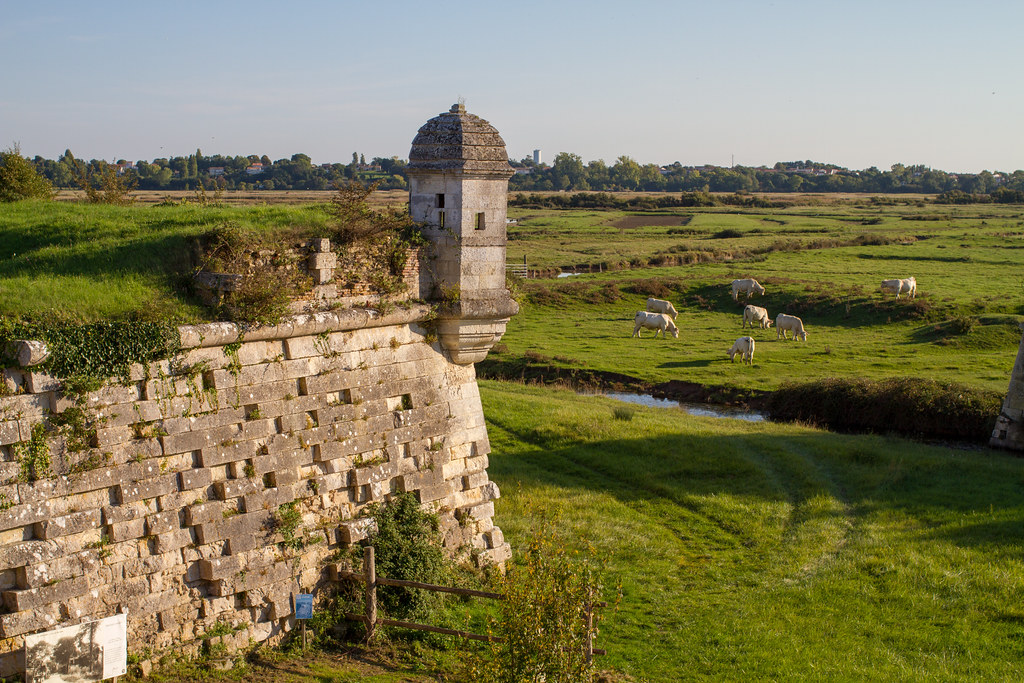
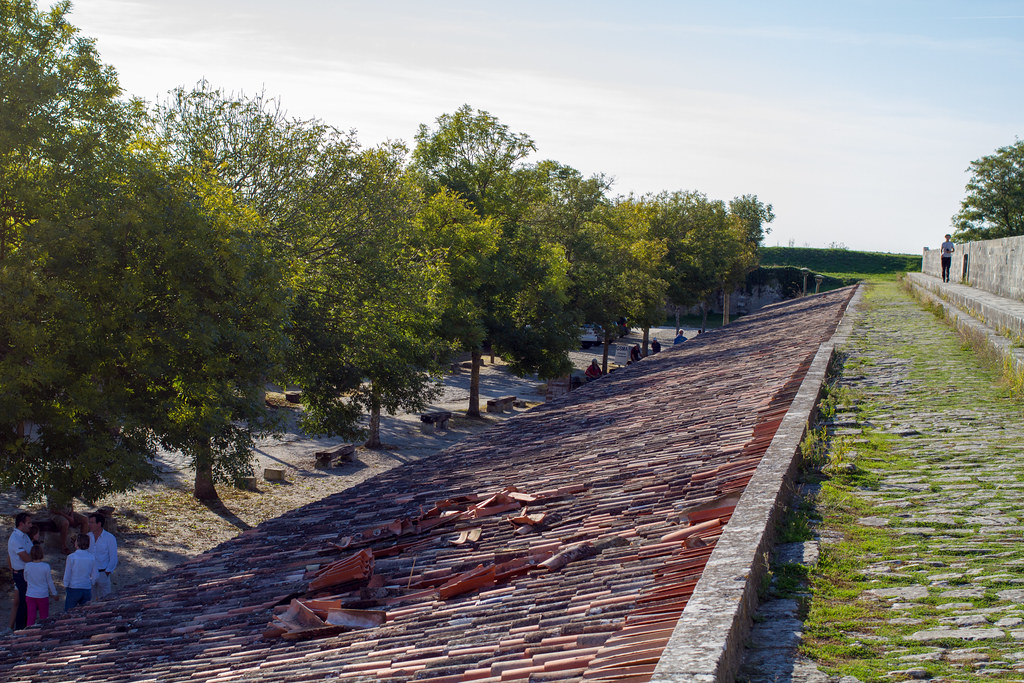
And the atmosphere in the village, I think there were more cafes and souvenir shops than I expected.
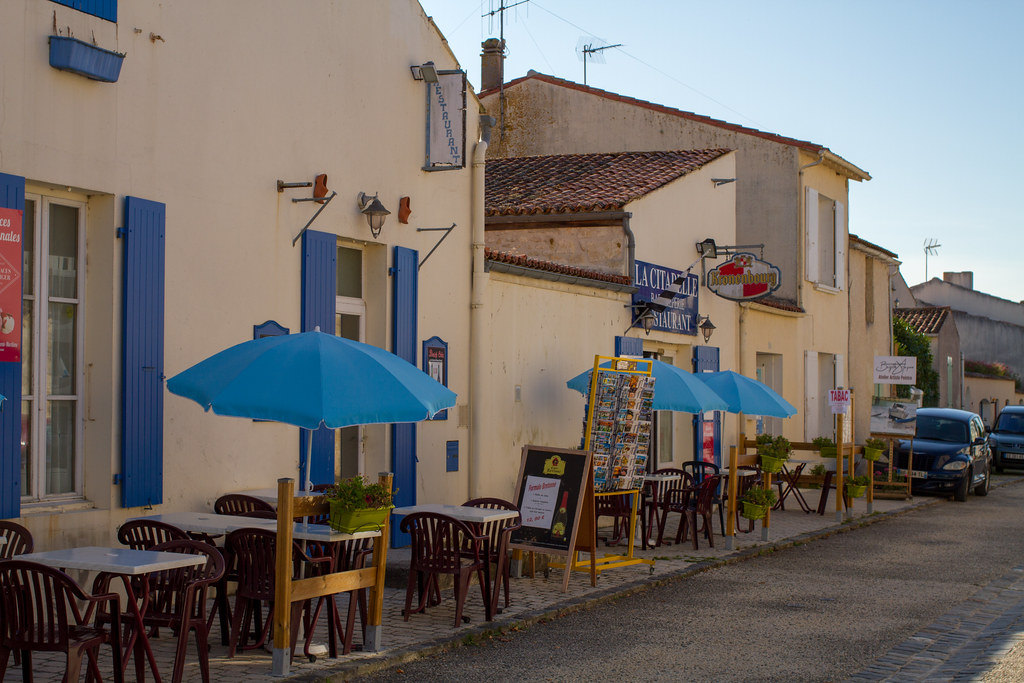

Is this the village of Walloon again? The main street was wide and there were many cars coming and going. This was a bit of a negative point, but on the other hand, the road itself was not asphalt, but cobblestone, so I can say that the atmosphere was more than the villages of Walloon.

Even so, the villages in the Charente-Maritime province have a very pleasant and open atmosphere with their marine blue colors.

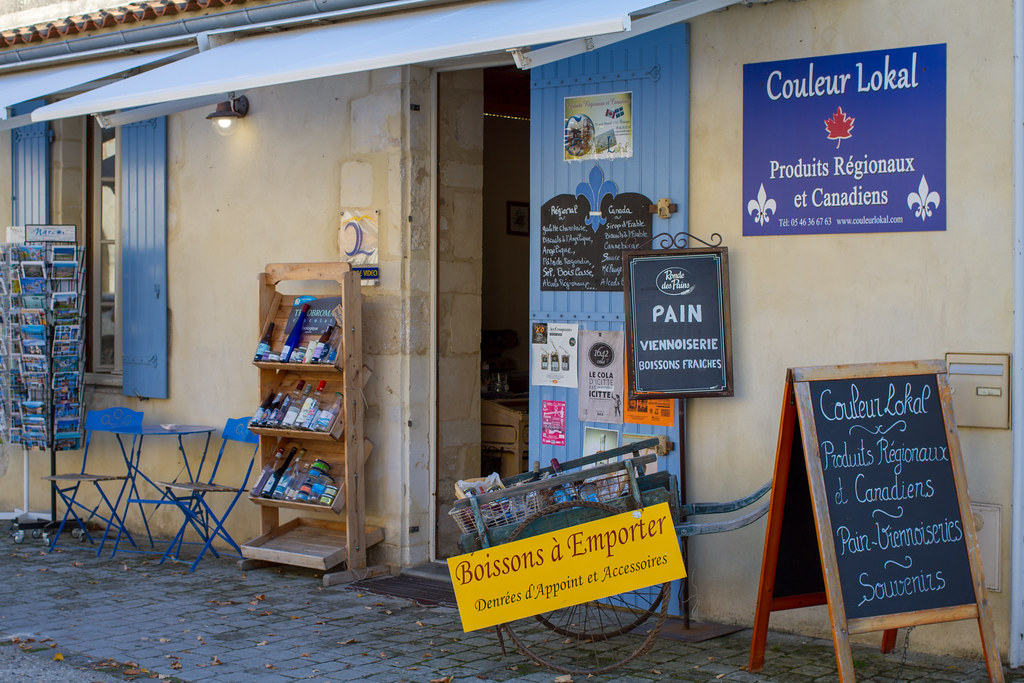
In the church, there is a special exhibition on Quebec. The reason…
The church in this village is called St. Pierre Church. It was built because the city flourished as a fortified city, and as a result of the increase in the number of inhabitants and the increase in the number of religious people, a church was needed in this city. The year when the church itself was built is not written in this description, but I guess it was in the 1600s from other web information.
At any rate, I couldn’t understand it there, but I took photos of as many panels as I could for later study. I’ll try to explain them in French as I read them. (I would be grateful if you could point out any errors in translation or interpretation.
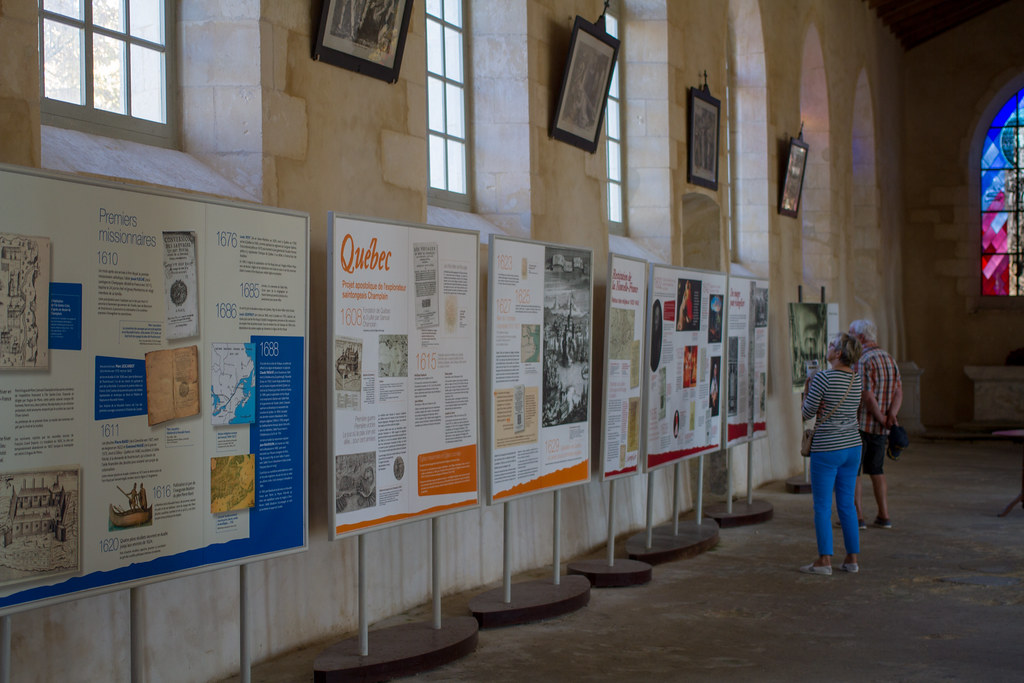
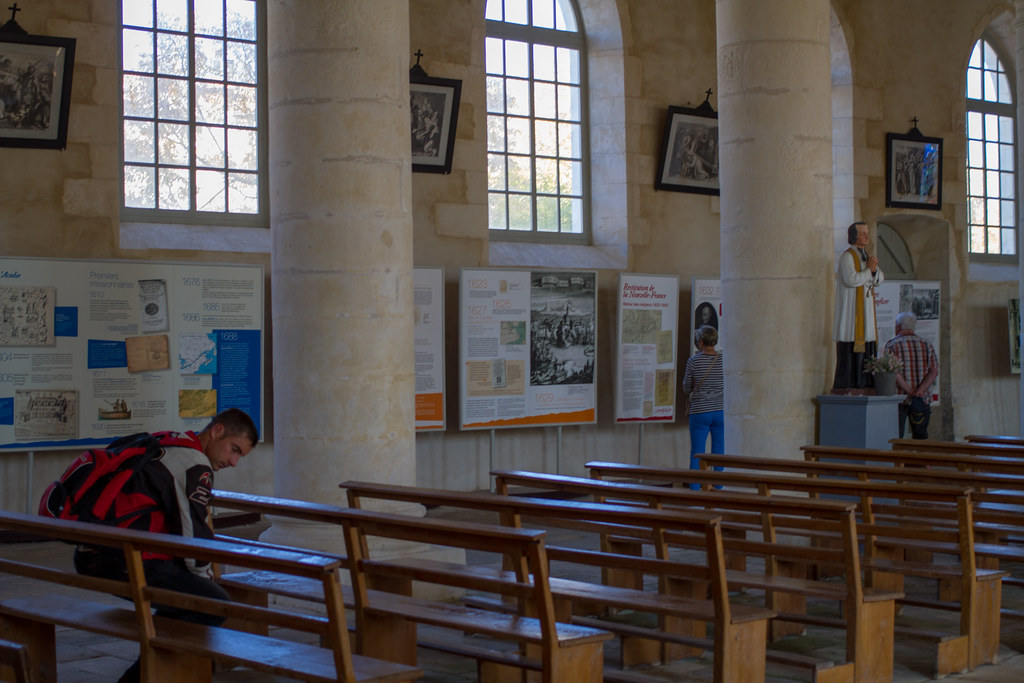
According to the panel, this special exhibition is also a memorial to “Father Maxime Le Grelle”. He was a man who helped to develop relations between France and the French-speaking countries of North America between 1970 and 1984. And he is laid to rest here in this church. The church is holding a special exhibition to commemorate his achievements in French-speaking North America.
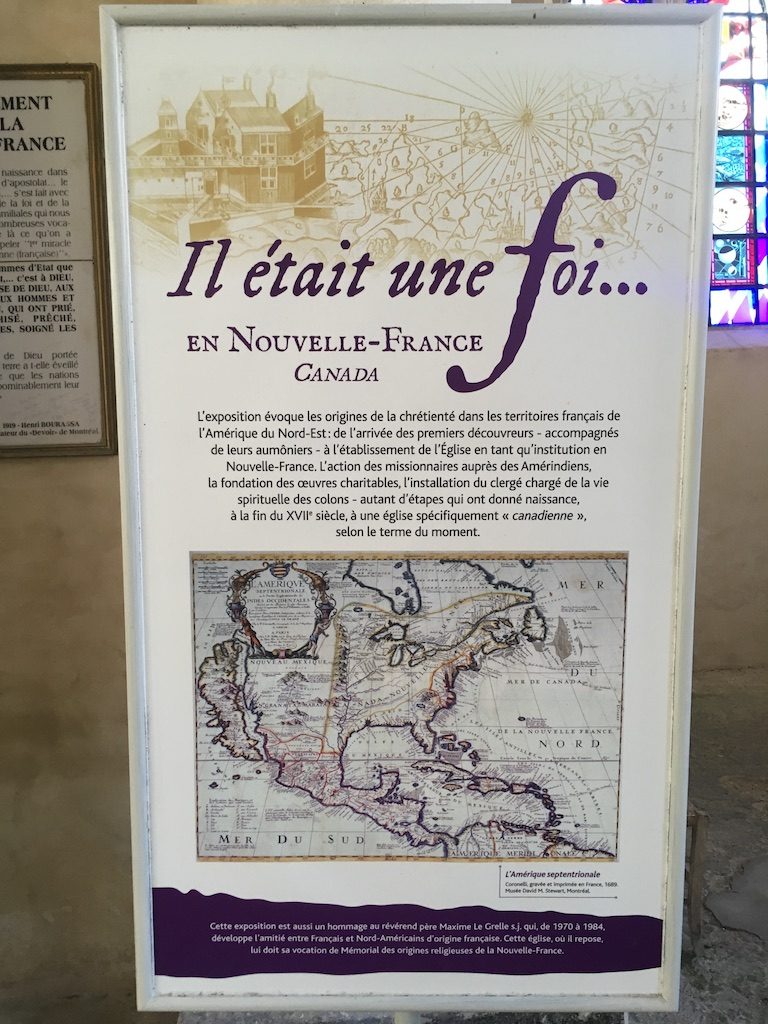
Father Maxime Le Grelle’s grave is located in the center of the church, right under the stained glass. Indeed, if you look closely at the bottom side of the stained glass picture, you can see what looks like a grave.
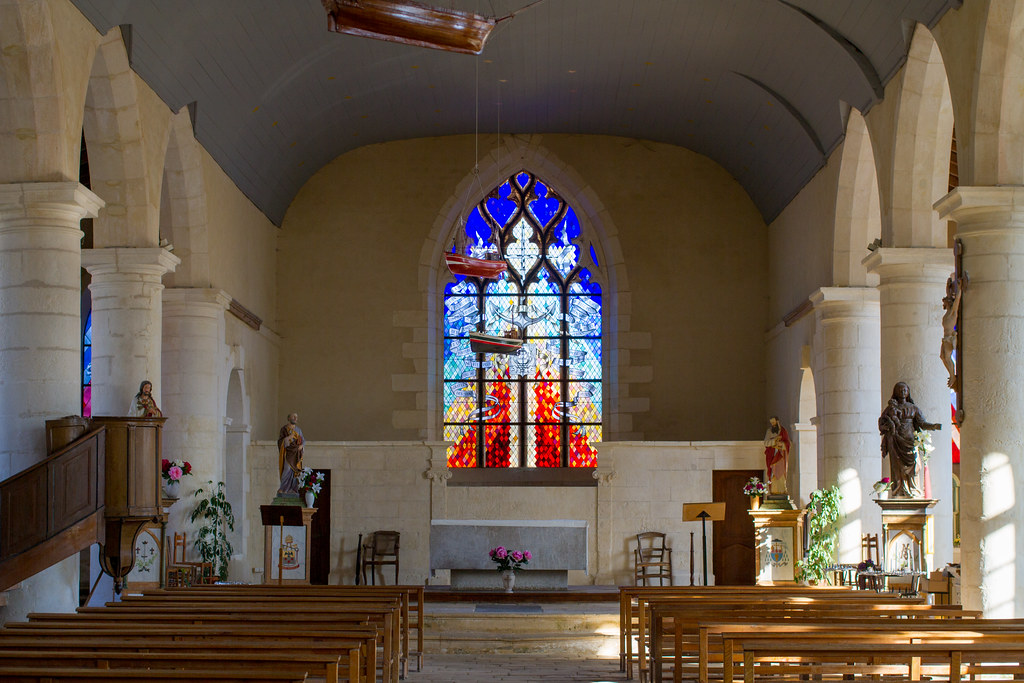
By the way, there seemed to be three stained glass windows behind the altar of the church. Unfortunately, I only took a picture of the middle one. I was distracted by photographing the special exhibition panel, and I failed to take the two on the left and right. The titles of the works are as follows. It was written on the explanation panel (or was it a leaflet?) in the church. All of them were made in the 1980s and 1990s.
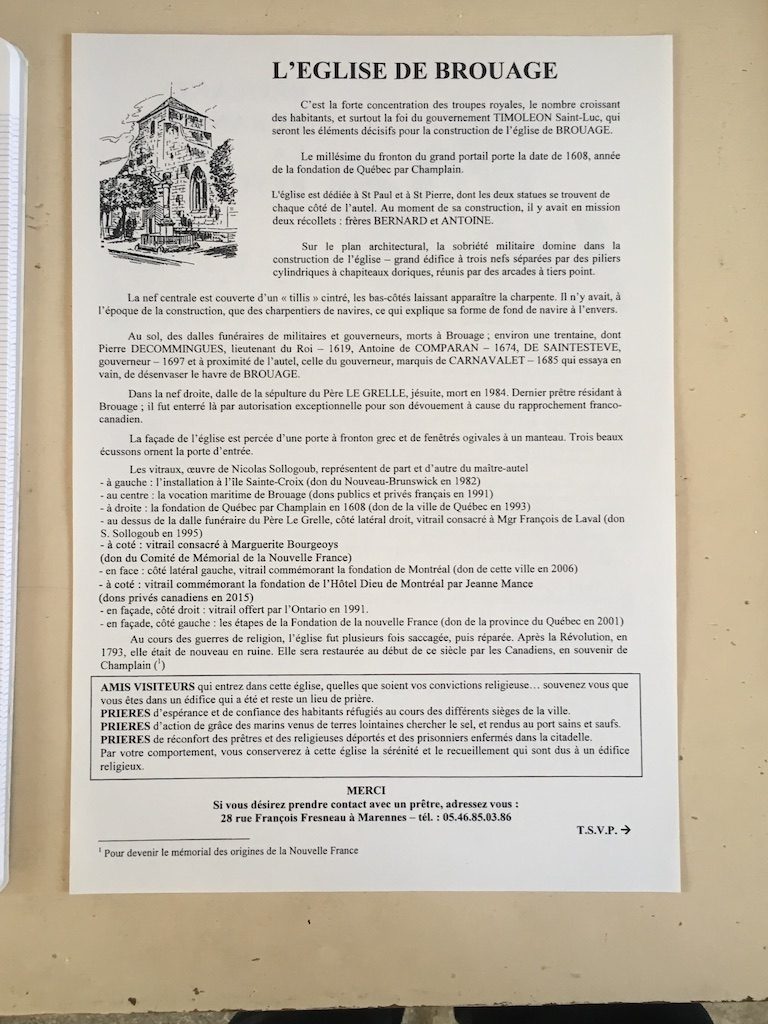
- 左側:サントクロワ島への移住 (L’installation à l’île Sainte-Croix)
- 中央:ブルアージュの海での生涯 (La vocation maritime de Brouage)
- 右側:1608年 シャンプランによるケベックの創設 (La fondation de la Québec par Champlian en 1608)
By the way, there was a special exhibition about the history of the New World from the French point of view in the church. I wondered why it was held here. Is there any connection with this area?
Following the Reconquista of Columbus and others, Catholics were vigorously expanding into the New World for missionary purposes as well. It is said that this religious background was the main reason for the French expansion into North America. In terms of historical background, the discovery of the New World took place around 1492, after which the Council of Trent, one of the most important conferences in the history of Catholics, was held in Europe, which is said to have set the direction of Catholicism after the Reformation. It is said that France, like Spain and other Catholic countries, began to expand into the world to propagate the Catholic faith. Among them, the expansion to the North American continent began.
I understood the relationship between this church and Quebec from the following panel’s explanation. It seems that Samuel de Champlain, the founder of the Quebec colony mentioned above, stopped by this church to pray for the success of the colony before going to Quebec. However, it was also mentioned that there is no record of this episode. However, Champlain left for the new continent Nouvelle-France from the port of La Rochelle, which is near this village, so it might not be strange if he stopped by this town, which was already known as a fortress city.
After further research, I found out that this Samuel de Champlain was born in this town. There is an article about him on Wikipedia in Japanese, and it says that he was born in this village. So the connection between this village and Quebec originates from here. I finally understood it.
Other than that, I took photos of many panels, but basically it was a history of missionary activities in the colonial initiation language, especially charitable activities, an exhibition of photographs of paintings related to them, and an explanation of the history of the war with England.
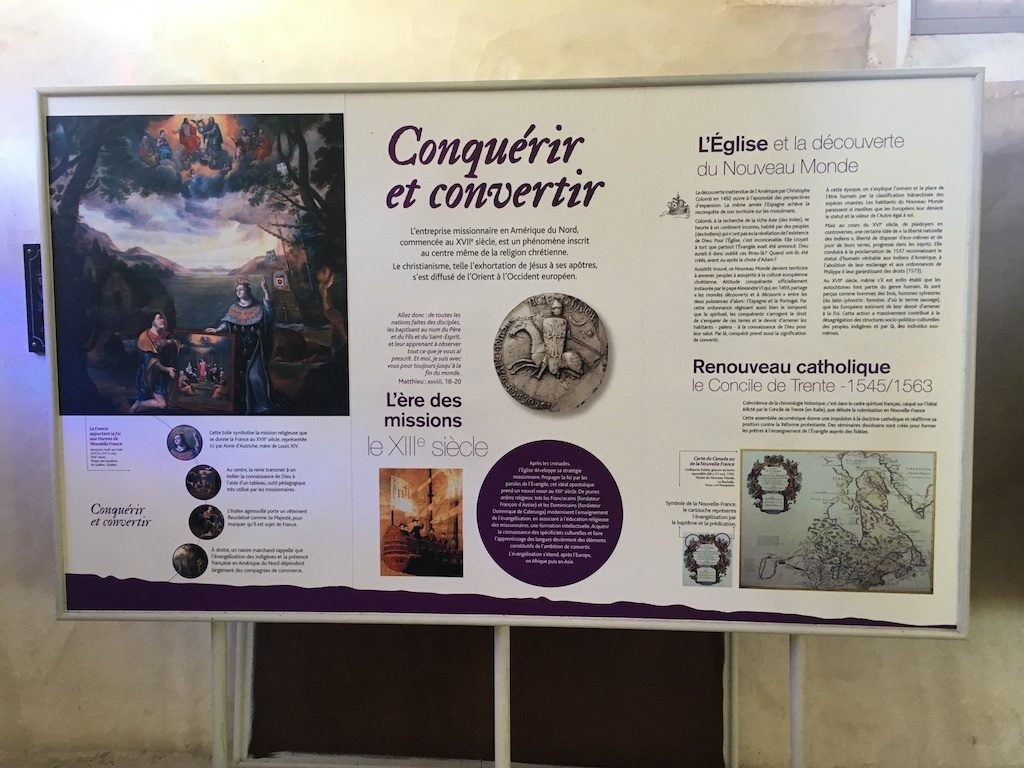
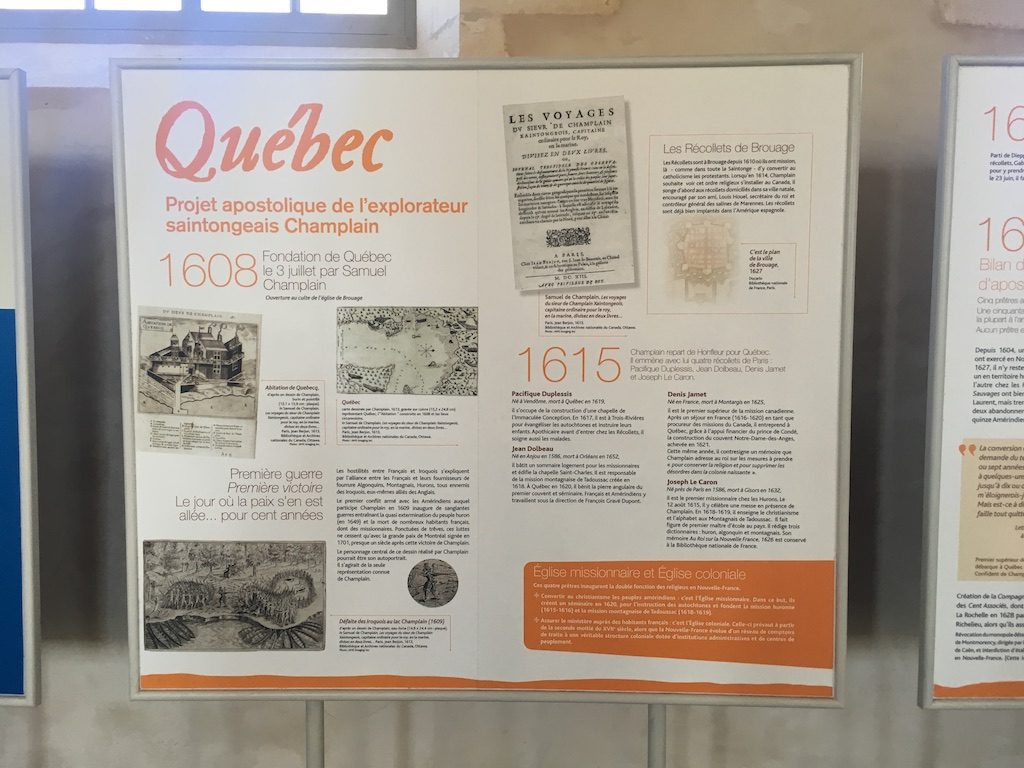
For example, in 1958, after World War II, Quebec had 5,000 missionaries, 116 Catholic hospitals, 415 free health clinics, and 3,000 Catholic schools.
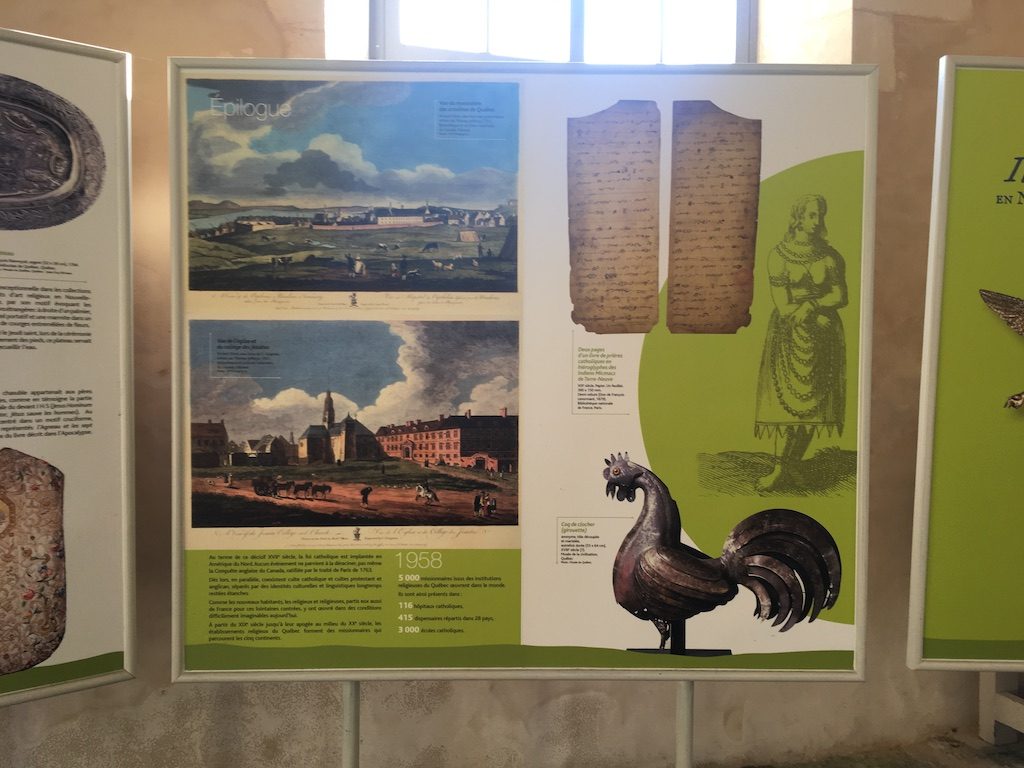
It was a special exhibition to introduce the history of Catholic missionary and charity activities. It’s true that this is a church. There were many things that I didn’t understand on site when I visited, but I was very satisfied because I was able to study them again by taking photos of the exhibition panels.
Old photos of the village are displayed here and there in the village.
By the way, there were photo panels showing the scenes of Brouage in the past everywhere in the city, and in this church, too, there was a photo showing how the church used to be.
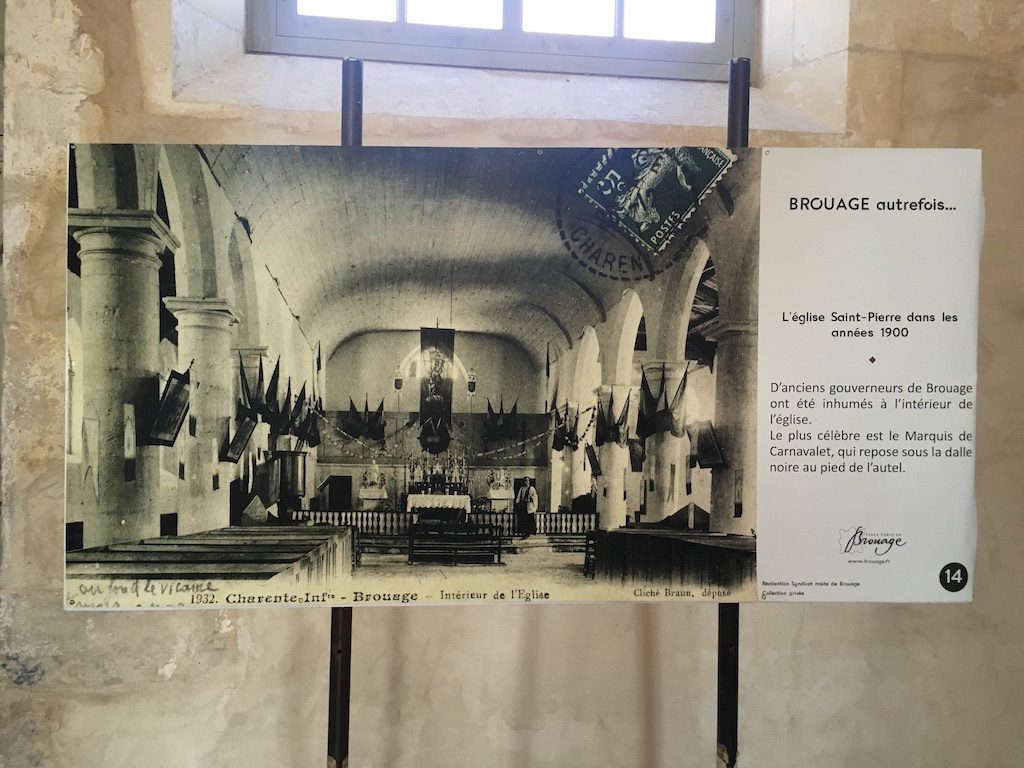

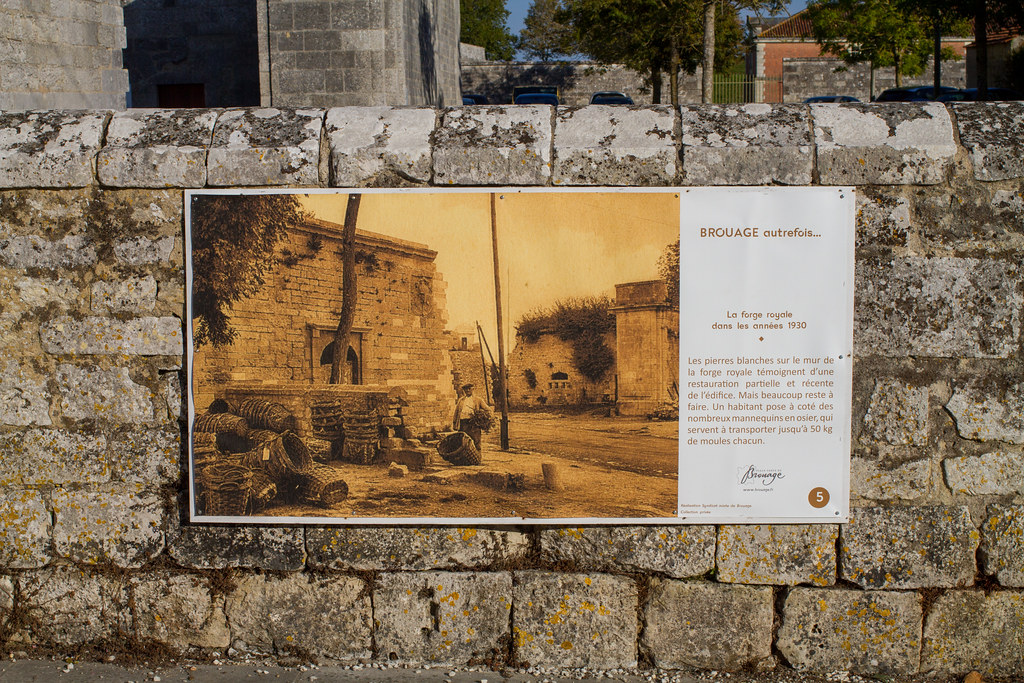
From all the photos, you can clearly see that the buildings have been preserved as they are today, despite the differences in their condition. I am always impressed by this kind of culture and attitude of European people.


